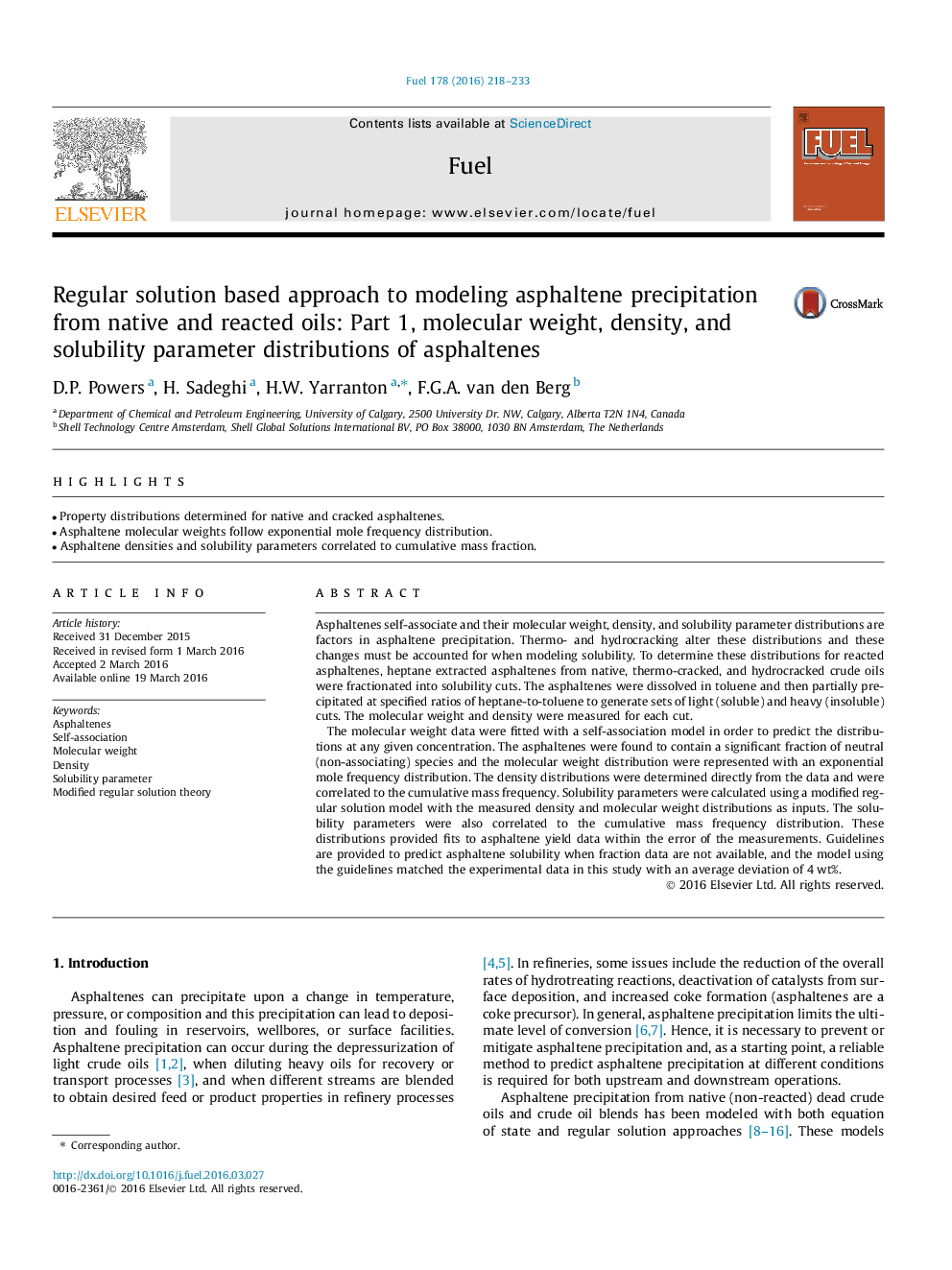| کد مقاله | کد نشریه | سال انتشار | مقاله انگلیسی | نسخه تمام متن |
|---|---|---|---|---|
| 205015 | 461094 | 2016 | 16 صفحه PDF | دانلود رایگان |
• Property distributions determined for native and cracked asphaltenes.
• Asphaltene molecular weights follow exponential mole frequency distribution.
• Asphaltene densities and solubility parameters correlated to cumulative mass fraction.
Asphaltenes self-associate and their molecular weight, density, and solubility parameter distributions are factors in asphaltene precipitation. Thermo- and hydrocracking alter these distributions and these changes must be accounted for when modeling solubility. To determine these distributions for reacted asphaltenes, heptane extracted asphaltenes from native, thermo-cracked, and hydrocracked crude oils were fractionated into solubility cuts. The asphaltenes were dissolved in toluene and then partially precipitated at specified ratios of heptane-to-toluene to generate sets of light (soluble) and heavy (insoluble) cuts. The molecular weight and density were measured for each cut.The molecular weight data were fitted with a self-association model in order to predict the distributions at any given concentration. The asphaltenes were found to contain a significant fraction of neutral (non-associating) species and the molecular weight distribution were represented with an exponential mole frequency distribution. The density distributions were determined directly from the data and were correlated to the cumulative mass frequency. Solubility parameters were calculated using a modified regular solution model with the measured density and molecular weight distributions as inputs. The solubility parameters were also correlated to the cumulative mass frequency distribution. These distributions provided fits to asphaltene yield data within the error of the measurements. Guidelines are provided to predict asphaltene solubility when fraction data are not available, and the model using the guidelines matched the experimental data in this study with an average deviation of 4 wt%.
Journal: Fuel - Volume 178, 15 August 2016, Pages 218–233
